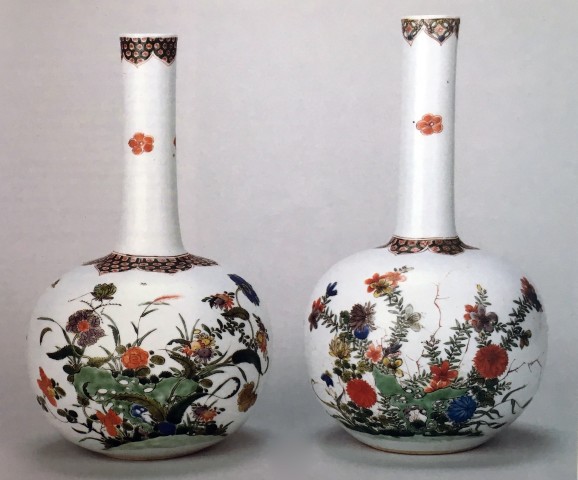The slightly compressed globular body enamelled with exquisitely drawn chrysanthemum, daisy, peony and poppy flourishing among leaves issuing from pierced rocks. A collar of leaf shaped panels filled with tortoiseshell diaper encircles the foot of the tall slender cylindrical neck which is sparingly decorated with red florets and, at the mouthrim, a band of cash motifs. The base is inscribed in underglaze blue with the Roman letter 'G'.
Literature
The use of the Roman letter 'G' inscribed in underglaze blue on the base is enigmatic. It occurs both on famille verte enamelled porcelain as well as on blue and white. A blue and white punch pot in the collection at Burghley House at Stamford, Lincolnshire, has such a mark. Both the present bottles and this latter piece are of very high quality suggesting that this type of 'G-marked' ware was of superior grade, custom made perhaps for a discriminating member of the East India Company, a private merchant, or for some elevated individual in England or the Netherlands. There is a famille verte teapot in the Groninger Museum in the Netherlands which also bears this unusual 'G-mark' on its base.
出版品
Gordon Lang, 'Polychrome Decoration' in: A Catalogue of Oriental Ceramics and Works of Art, ed. Anita Gray, London, n.d., pp. 44, no. 54.

